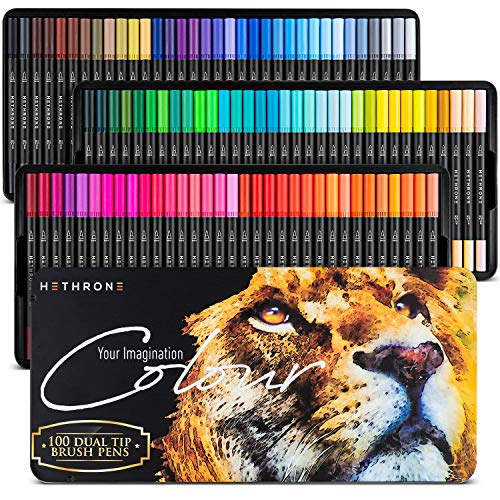Calligraphy artists create magnificent letters using pens and brushes. The visual art form has developed over the years to become popular among students, art majors etc. It stands apart from hand lettering owing to its distinctive characteristics such as strokes, stroke order, character structure, balance and rhythm.
Calligraphy has been divided into traditional and brush. Both these styles require a thorough understanding of the particular intricacies to master them. The primary distinction between traditional and brush calligraphy is the usage of tools. While the former uses special nib pens, the latter takes after its namesake.
Both styles use the same technique of alternating pressure. Upstrokes are thin and require less pressure, whereas down strokes are thicker and demand more pressure.
For beginners, brush pen calligraphy works best because it's simpler to learn and generally gives you more control when shaping your letters. It encourages you to blot creativity and expression from pen to paper because your writing hand isn't constrained by the rigid rules of traditional calligraphy, such as the spacing and slanting of your letters.
Young artists with a particular proclivity for this art form have a range of tools at their disposal to experiment with and provide finesse to their creations. And the top spot in their list of tools are dual tip brush pens.
The pen has two tips. A fine tip is located at one end, and a brush tip is located at the other. The dual tip brush pens were developed in the early 1970s by a Japanese company and offered their users flexibility, scalability, and ease of movement. It is currently the tool of choice for calligraphy artists, illustrators, and everyone else.
While the back of the brush, which has the brush tip, functions as a paintbrush and allows users to move around the artboard, the top end, which holds the pen tip, is used to draw precise, even lines.
Dual tip brush pens have triggered a massive demand for themselves among the artistic community owing to its versatility and ease of use. As our appetite to find almost anything on the internet grows, so has the catalog for dual tip brush pens online with numerous companies coming up with state-of-art supplies.
Why calligraphy artists use dual tip brush pens
The main benefit of dual tip brush pens is their adaptability in use. Additionally, the brush and fine tip have become their preferred companion as art enthusiasts have rediscovered their love of calligraphy.
However, using dual tip brush pens will save you the trouble and inconvenience of handling your own pigment. Compared to specialty brushes, they are much more portable and affordable. They also have a variety of synthetic tips to mimic the qualities of brush bristles.
Another benefit of these pens is their simplicity of movement. The artist can switch between fine lines and brush strokes with a flick of the wrist thanks to the brush and fine tip being side by side.
Tip for beginners: While you buy dual tip brush pens online, remember to go for those that have a metal nib and soft bristles on the brush tip.


